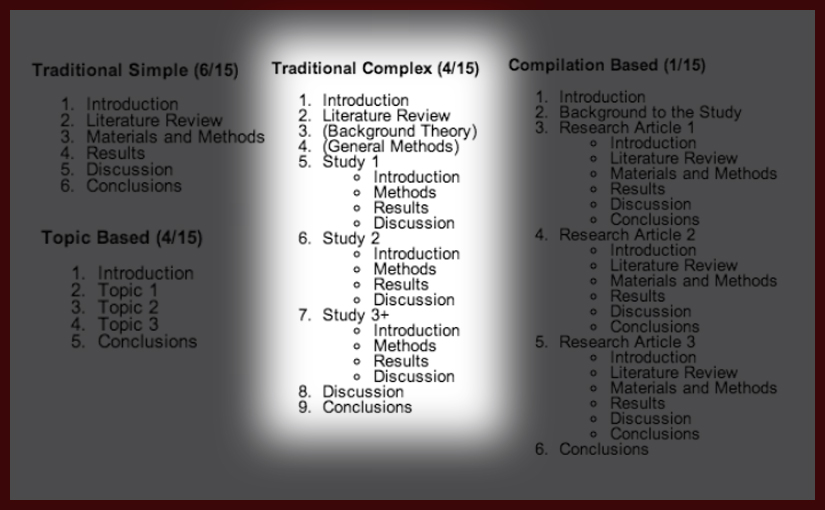This is the structure most often used by those who have built their research around case studies or iterative cycles of Action Research. How do you decide how many case studies to conduct? I think it’s a little like flower arranging, odd numbers seem to work best. The total number will depend on how complex and time-consuming each study is and the methods that you use. To get into enough detail and data analysis of a complex field it can hard to complete five studies, but on the other hand, doing only two prevents you from triangulating and from developing and showing your use of reflexive research methods fully. Three seems like a minimum. Some researchers do seven studies and those of you working in Human Computer Interface may complete many for cycles of testing that are sometimes grouped within a larger study.
In this structure, research methods are introduced and detailed via a standalone chapter, The General Methods chapter, and then discussed within each of the three studies. The General Methods chapter, before the chapters on the studies, is especially important if you are using a mixed method. You must refer to the method again in each study chapter, ‘bringing it to life’ by showing it in action in your research. Use examples, with the appropriate language and terms from the method(s), to show the examiner, in detail, how you have deployed the method in each study and what, if anything, changed between studies and your application of the method.
